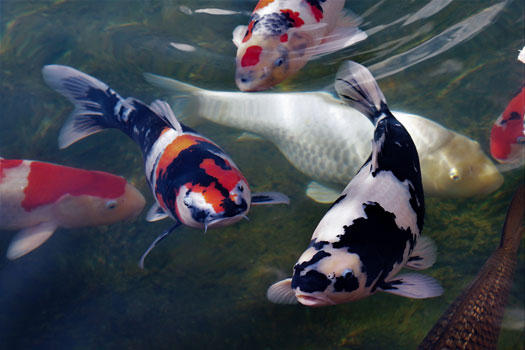- Your shopping cart is empty!
What Are the Pros & Cons of Having an Indoor Koi Pond?

There are many reasons you might want to build a koi pond. Sitting by a pond can be relaxing, especially if there are beautiful, jewel-colored fish inside to watch. Koi ponds are also conversation starters and a source of entertainment for your guests. Most people think of koi ponds as outdoor fixtures, but did you know you can build one indoors too? Here are some pros and cons of having a koi pond inside your home.
Pro: Protection from the Elements
Keeping a koi pond outdoors leaves it vulnerable to a variety of hazards, ranging from inclement weather to hungry wildlife. Having an indoor pond eliminates the chance of foreign objects such as leaves and other debris entering the water or filtration system, protects it from excessive sunlight and precipitation, and makes it easier to maintain a perfect water temperature. Raccoons and herons are some of the predators that enjoy snacking on fish, so building a pond inside would eliminate the risk of fish getting eaten as well.
Pro: Enhancement of Home Décor
An indoor water feature is a unique way to add visual interest and style to your home. Playing with different lighting elements, adding a fountain, or installing an underwater rock shelf are just some ways you can customize an indoor koi pond to suit your design aesthetic. The exterior can be constructed of wood, stone, cement, or any other material to complement the décor. A pond also has the benefit of cooling the air. When indoors, your koi pond will transform the surrounding room into a serene, inviting oasis.
Con: Requires Different Hardware
Though they both need to be maintained with high-quality koi pond supplies, indoor ponds have different needs than outdoor ponds. For example, koi fish do best in natural light. If a window isn’t available near your indoor pond, you’ll have to install a light source with UVA/UVB white light. Also, indoor ponds tend to be smaller and have less surface area, which means the water tends to have less oxygen. Your indoor koi pond will likely need an aerator or air pump to oxygenate the water if you hope to keep your fish alive. Ponds increase humidity in the surrounding air, so a dehumidifier may be necessary. Also, all these components might make a lot of noise inside as they work together to keep the pond going.
Con: Limited by Size and Location
You can’t put an indoor pond just anywhere inside of a house. Proximity to windows, power sources, and drainage can determine which room is suitable for a pond. Another thing to consider is the weight of the pond. Ideally, indoor ponds should be placed in the basement or ground floor, where there’s no danger of causing any weight-related damage.
Whether you have a koi pond inside your home or in your backyard, make sure to care for it properly to ensure your fish stay healthy and thrive in the environment. From pond vacuums and pumps to lighting and koi food, Aquatic Warehouse has everything you need to maintain a beautiful and healthy pond. If you have any questions, don’t hesitate to call one of our aquatic experts at 858-467-9297.
